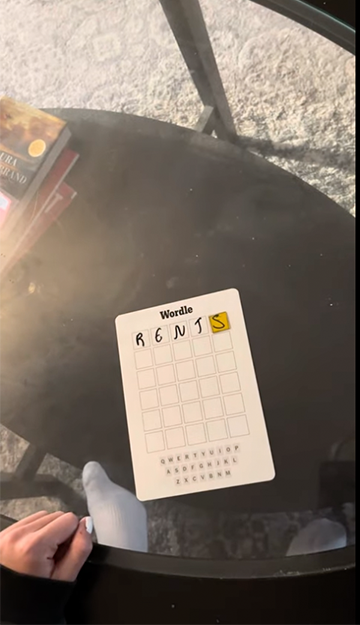 The following is a supplement to “Solving the Wordle: How Word Puzzles Can Help Elementary Students Become Skilled Readers,” an article by Mark Lauterbach and Marcy Zipke in the January/February/March 2025 issue of Literacy Today.
The following is a supplement to “Solving the Wordle: How Word Puzzles Can Help Elementary Students Become Skilled Readers,” an article by Mark Lauterbach and Marcy Zipke in the January/February/March 2025 issue of Literacy Today.
Word puzzles such as Wordle aren’t just entertaining—they’re powerful tools for building literacy skills in young learners.
Here we’d like to provide additional information about Wordle as well as other recommended metalinguistic word puzzles that can be completed online and/or in board game format.
There are four games offered by The New York Times that we recommend for use in the classroom with elementary-aged children:
Wordle. To solve the Wordle, players have to guess a mystery 5-letter word in six or fewer tries. After each guess, the game provides feedback in the form of green letters (right letter, right position) or yellow letters (right letter, wrong position). To solve, participants have to use their knowledge of common phonics patterns and morphemes to come up with guesses that meet the criteria. In addition, the guesses that yield the best feedback are usually words with high-frequency letters and/or more common words.
Spelling Bee. The Spelling Bee is six letters arranged in a hexagonal pattern encircling one target letter. To complete the puzzle, the participant has to find all of the possible words of at least four letters in length that contain the central letter at least once. Letters can be used more than once, so words can get to 12 letters or more. Words that use all of the letters are called pangrams.
Connections. Connections presents the participant with 16 separate words. To solve, the words must be grouped into four themed categories. Each category might represent a semantic concept (e.g., time off: break, holiday, leave, and recess), a phonological concept (e.g., homophones: holy, wholly, holey and holi), or other linguistic domain (e.g., colors with their first letter missing: ink, range, lack, and old). The New York Times’ version allows for four mistakes in trying to solve the puzzle.
Strands. Much like a traditional word search, Strands is a 6x8 grid made up of letters with hidden words. Unlike a traditional word search, the letters within words can be connected in any direction: left-to-right, top-to-bottom, and diagonally down, but also right-to-left, bottom-to-top, and diagonally up, as well as any combination of those moves within words. Participants tap one letter at a time to create words, then the words turn blue as they are found, and letters cannot be used again. The entire grid is used when the puzzle is created. Additionally, all of the words within a puzzle conform to a theme, which is hinted at in the daily title. Because the list of words to search for is not given ahead of time, participants must consider the semantic connections between words as they solve. It is also useful to look for orthographic patterns and/or morphemes within the grid.
To find the original games offered by The New York Times, visit: nytimes.com/crosswords
To create your own puzzles, visit:
In addition to online puzzles, old-fashioned board games such as Scrabble, Upwords, and Bananagrams or the classic paper-and-pencil game Hangman (which has many new and more appropriate names) incorporate phonology, morphology, orthography, and vocabulary into their completion.
There is also a Wordle board game.
Finally, the Codenames board game similar to Connections but is completed in teams, with one team member coming up with the categories and the other members required to guess which words fit the clue.
Mark Lauterbach is an associate professor of early childhood education at Brooklyn College, part of the City University of New York.
Marcy Zipke is a professor of elementary special education at Providence College in Rhode Island.
Disclaimer: The viewpoints expressed in blog posts on this website are those of the individual writers and do not necessarily reflect the views of ILA. We have taken reasonable steps to ensure the accuracy of the information contained in blog posts but do not warrant the accuracy or completeness of such information.